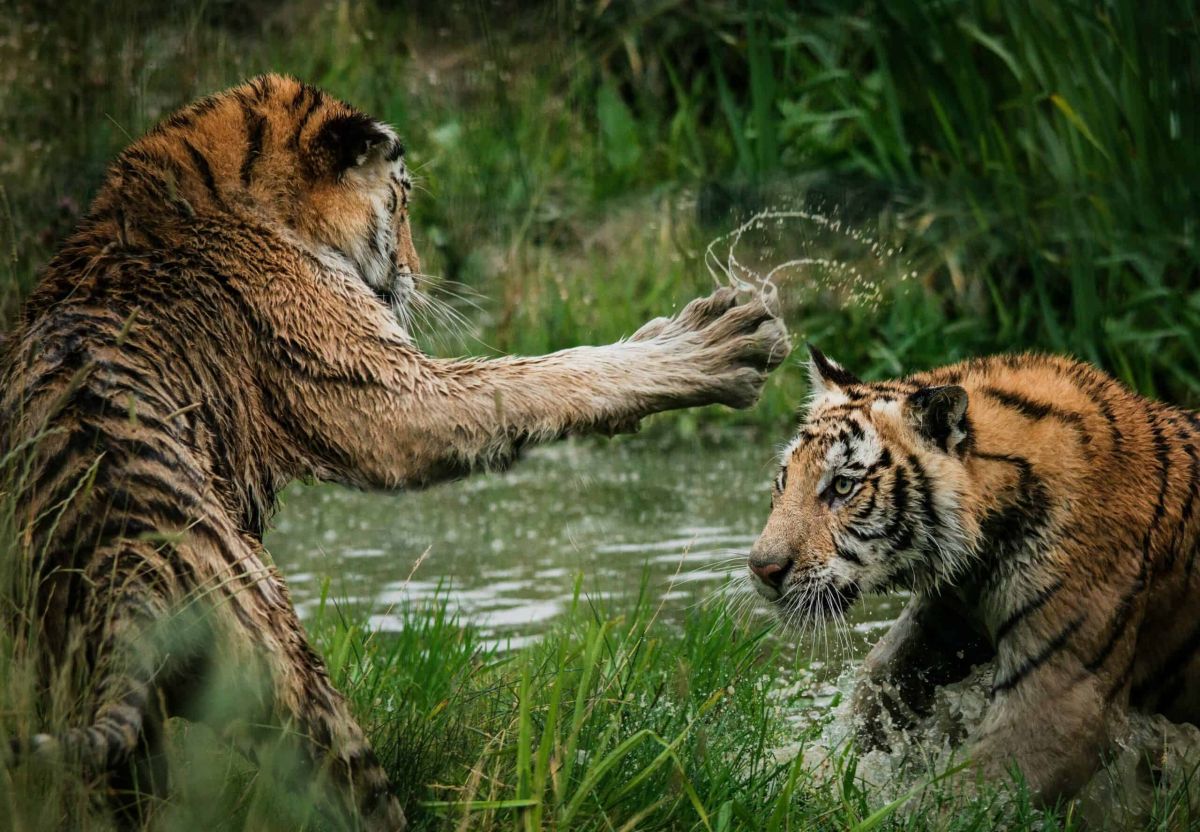The Claws of the Kingdom

When we think of cats, our minds often drift to the charming antics of our household companions, purring softly on our laps. But there’s a vast difference between the domestic cats we know and their wild counterparts—particularly when it comes to their claws. Whether it’s the graceful swipes of a house cat or the powerful, lethal claws of a tiger, the functionality and structure of cat claws reveal fascinating adaptations to their environments.
Structure and Function
Both domestic cats (Felis catus) and big cats, such as lions (Panthera leo), tigers (Panthera tigris), and leopards (Panthera pardus), belong to the Felidae family, but their claws serve slightly different purposes based on their lifestyles.
- Claw Structure: Both domestic and big cats have retractable claws, which means their claws can be extended or retracted. This adaptation helps keep claws sharp for hunting and climbing, as well as minimizing wear when not in use. However, the size and robustness of big cats’ claws are significantly greater, reflecting their need to capture and sometimes overpower larger prey.
- Differences in Sharpness and Strength: Domestic cats have sharp claws that are designed for gripping, climbing, and defending themselves from smaller threats. Their claws can reach lengths of about 1 inch and are effective for swatting at toys, scratching surfaces to maintain their sharpness, and even climbing trees. In contrast, big cats possess claws that can measure up to 4 inches long and are much thicker. These claws can puncture and grasp the flesh of large, struggling prey, providing them with a crucial hunting advantage.
Purpose Driven by Habitat
The habitat and lifestyle differences between domestic and big cats have shaped their claw adaptations:
- Domestic Cats: As primarily solitary hunters, domestic cats rely on stealth and agility to catch smaller prey like rodents and birds. Their claws are excellent for climbing, allowing them to escape predators and to perch in high spots. Additionally, the ability to retract their claws protects their pads from wear as they walk on various surfaces.
- Big Cats: In contrast, big cats are apex predators, often relying on a combination of strength and speed to hunt. Their claws play a crucial role in grappling with large animals. For instance, a lion uses its claws to hold down large ungulates, while a tiger uses its powerful forelimbs and sharp claws to bring down substantial prey such as deer. Their claws are built not just for capturing but also for delivering fatal wounds, showcasing nature’s capacity for specialization.
Behavioral Aspects
Beyond functionality and habitat adaptations, the behavior of these cats also sheds light on their claw use:
- Scratching Behavior: Domestic cats will scratch surfaces primarily to mark territory and keep their claws healthy and sharp. This behavior is instinctual, allowing them to shed the outer claw sheaths. Owners often provide scratching posts to enable this natural behavior, as it prevents damage to furniture.
- Hunting Strategy: Big cats utilize a different claw strategy. They often stalk their prey before pouncing, using their claws to grip and hold onto the animal once captured. For example, when a leopard climbs trees, its claws provide the necessary grip, allowing it to drag its prey up to safety, keeping it away from scavengers.
Conclusion
While domestic cats and big cats share a common ancestry, their claws exhibit unique adaptations that serve specific roles in their respective lives. Domestic cats have claws tailored for agility, territory marking, and small prey capture, allowing them to thrive in human environments. Conversely, big cats possess powerful, formidable claws designed to seize and subdue large prey, marking them as some of nature’s most efficient hunters. As we appreciate the beauty and grace of cats, whether curled on our sofas or prowling through the wild, understanding the many ways their claws contribute to their survival gives us deeper insight into their remarkable world. From the soft scratch of a pet cat’s paw to the deadly swipe of a jaguar, each claw tells a story of adaptation and evolution.



